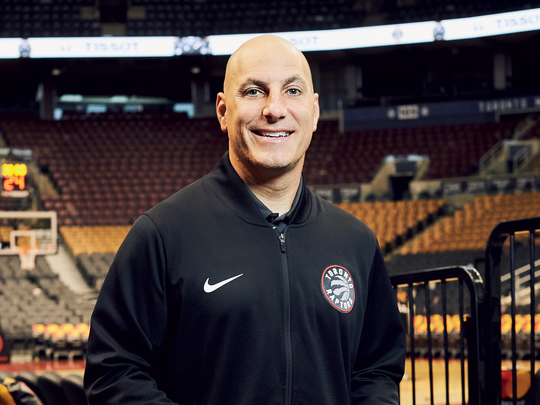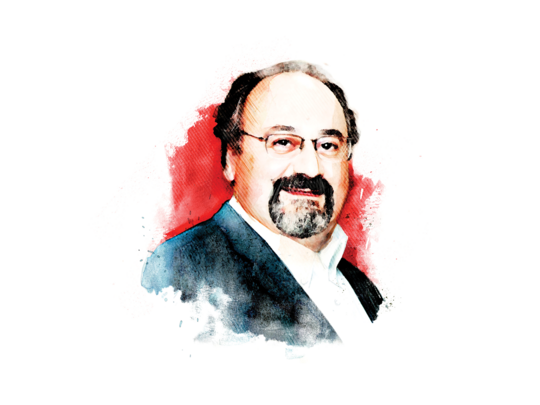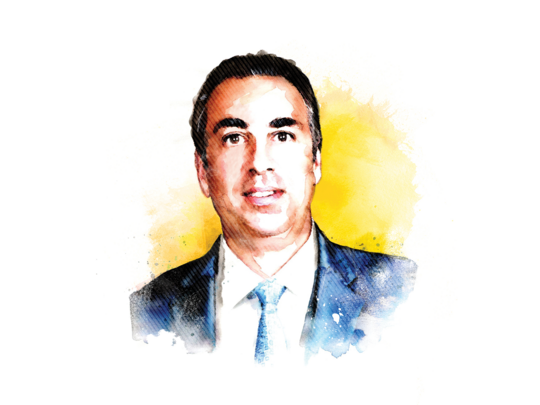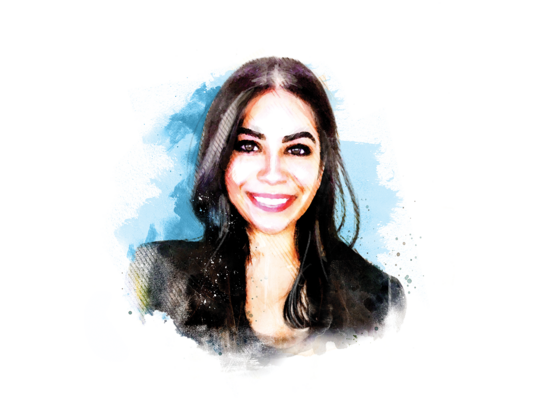Rising from the banks of the Seine stand four glass buildings designed to look like four half-open books. This is the Bibliothèque nationale de France, the colossal national library of France, home to 15 million books, 390,000 newspapers and one of the largest and most diverse Armenian collections in the world.
At the helm of this collection is historian Mikaël Nichanian. As curator for over a decade, Nichanian has worked to preserve precious pieces of Armenian cultural heritage and to raise awareness in French society about the breadth of the collection.
A graduate of the prestigious Université de Paris-Sorbonne and the École normale supérieure, for which he received an AGBU scholarship, Nichanian has intellectual interests that span discipline and era. A specialist of Byzantine history, he also recently published a book entitled Détruire les Arméniens : Histoire d’un génocide (Destroying the Armenians: The History of a Genocide) which traces the evolution of scholarship on the Armenian genocide and its transformation over the past two decades.
Q What are the responsibilities of a curator at the Bibliothèque nationale de France (BnF)?
A The responsibilities of a curator are multifaceted. First and foremost, they entail knowing the existing collections inside and out and working to showcase them on a large scale. For example, in 2012, I prepared an exhibit on Armenian books to celebrate the 500th anniversary of the birth of Armenian printing. The exhibit was not held in a small museum or gallery, but right in the middle of Paris, across the river from the Louvre, at the Bibliothèque Mazarine, the oldest public library in France. The setting was ideal to feature exemplary works from the 16th to 18th centuries that are housed in our collection.
Another major part of my work is research. A curator in my position must have intimate knowledge both of the current research in progress in Armenian studies and of the scholars around the world who are conducting it. It is only by following these developments very closely that I can get a sense of the evolution of ideas in the field. In the same vein, a curator must always have an eye to enriching the Armenian collection at the BnF as much as possible.
I also want to emphasize just how special and rare it is in the diaspora first to have an extensive Armenian collection housed in a national library and second to have a specialist devoted purely to caring for and developing it. Outside Armenia, only two such institutions exist: the Bibliothèque nationale de France in Paris and the Library of Congress in Washington D.C.
Q What does the Armenian collection at the BnF include?
A The Armenian collection at the BnF is remarkable both in the history of its pieces and in their importance. Some of the most unique pieces include a fragment of Egyptian papyrus written in Armenian from the 6th century; a collection of Armenian coins from dynasties ruling nearly two millennia ago; and 350 manuscripts, the oldest of which dates back to the 10th century. A number of these manuscripts contain unpublished texts crucial in helping us understanding the history and religions of the Middle East.
The Armenian book collection at the BnF is also very important. It boasts 60% of all Armenian titles published from the 16th though the 18th centuries. The oldest text in the collection is actually a book of magic spells and prayers published in Venice in 1512. It was used by Armenian merchants on trade routes from Amsterdam all the way to Calcutta and was seen as an indispensable tool to help ward off evil spirits and protect the merchants’ health during their long journeys at sea.
Q How can Armenian studies be invigorated in France and around the world?
A Considering the size of the Armenian community in France, Armenian studies is not as developed as we might expect or hope. There are certainly a handful of brilliant scholars doing innovative work in the field, but the interest of the wider Armenian community in the social sciences, history, literature and language is lacking.
In order to enliven the field, we must first and foremost emphasize how essential research is in the development of Armenian culture and how important rare languages like Armenian are in research. There is a preconception that only international languages like French, English and German are key to research, but mastery of Armenian can prove to be a strategic advantage in producing original work in Armenian studies as well as in many other fields, including Indo-European, Byzantine, Ottoman, Soviet and even Iranian studies.
Within Armenian studies, there are a great many sub-fields that have yet to be thoroughly explored by scholars, which makes research in the field filled with possibility. These little explored sub-fields include topics relating to Armenian literature, history and language, particularly Western Armenian literature and Ottoman Armenian history.
Q What projects are you working on now?
A Right now, Boris Adjemian, the director of the AGBU Nubar Library in Paris, and I are working on two special issues of the library’s journal Études arméniennes contemporaines on the Armenian massacres in Ottoman Anatolia between 1894 and 1897. In these issues, we will take a close look at the complex connections between these massacres and the genocide in 1915. It also gives us the chance to highlight the innovative work of a new generation of researchers in Armenian and Middle Eastern history and disseminate it far and wide.
Banner photo by David Bacher
















